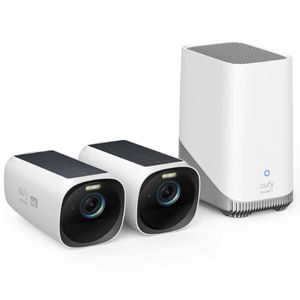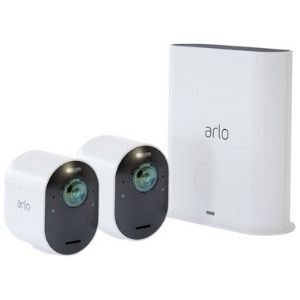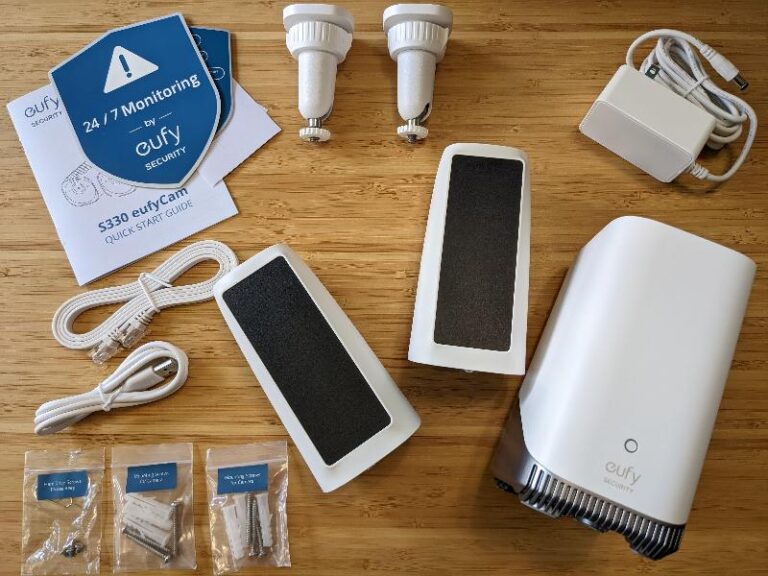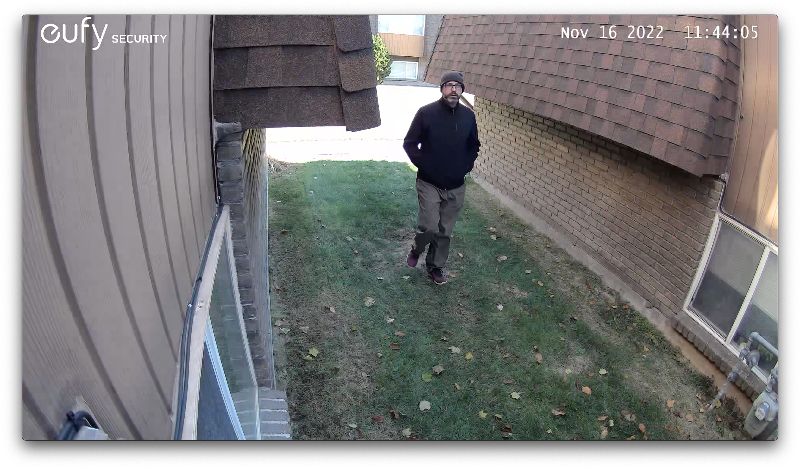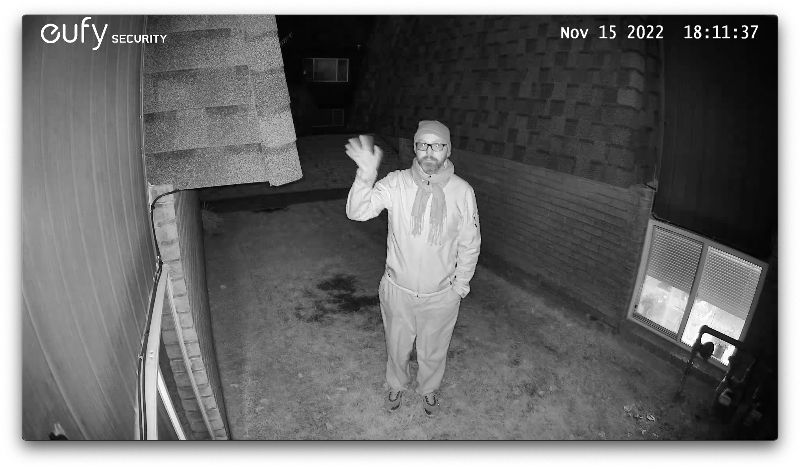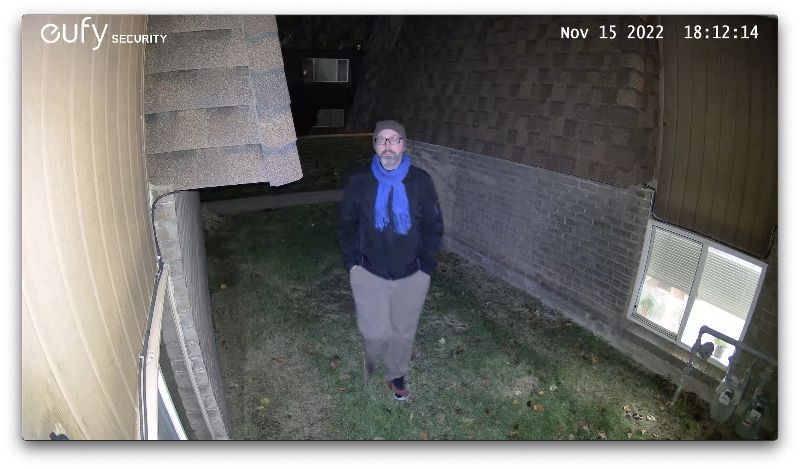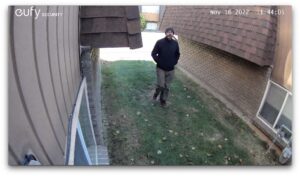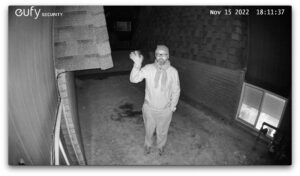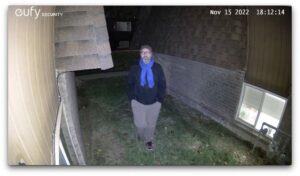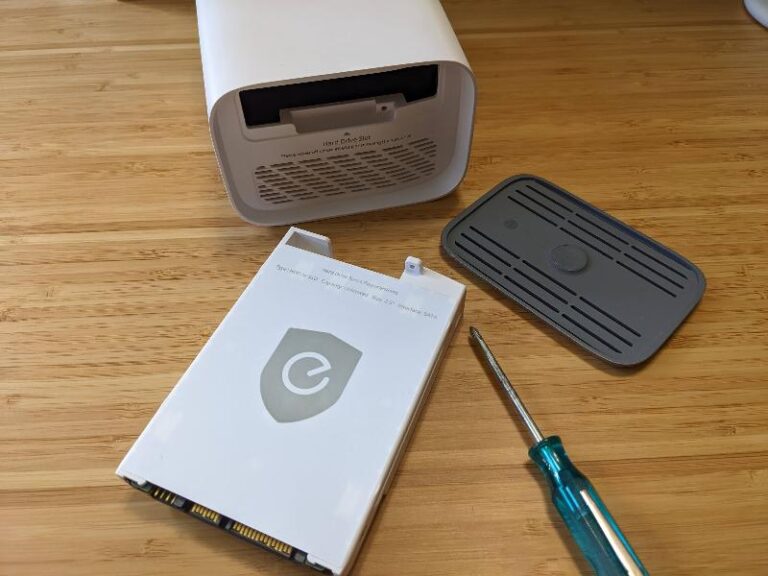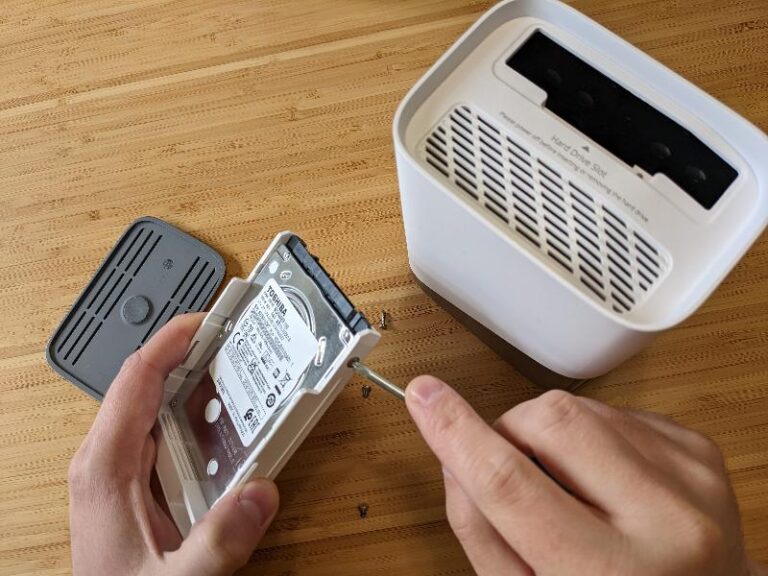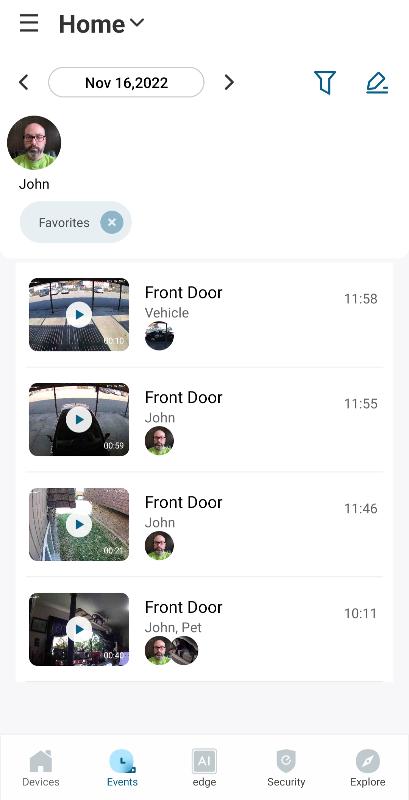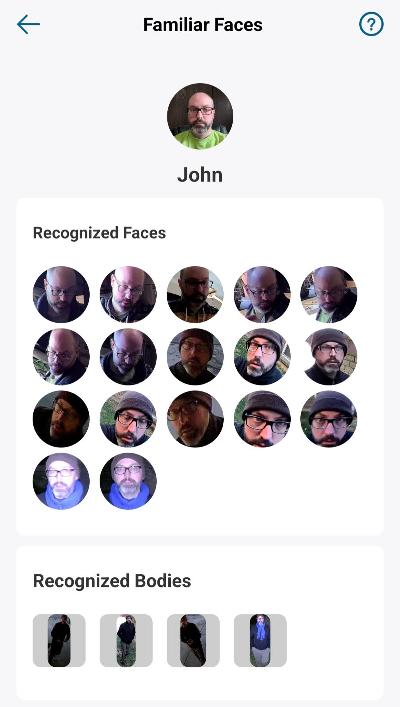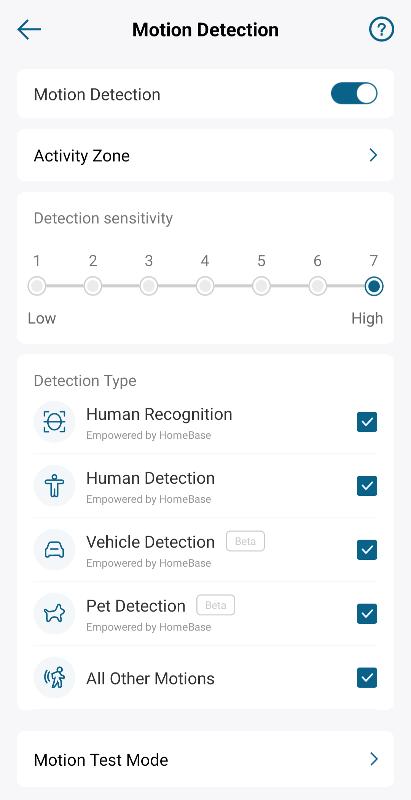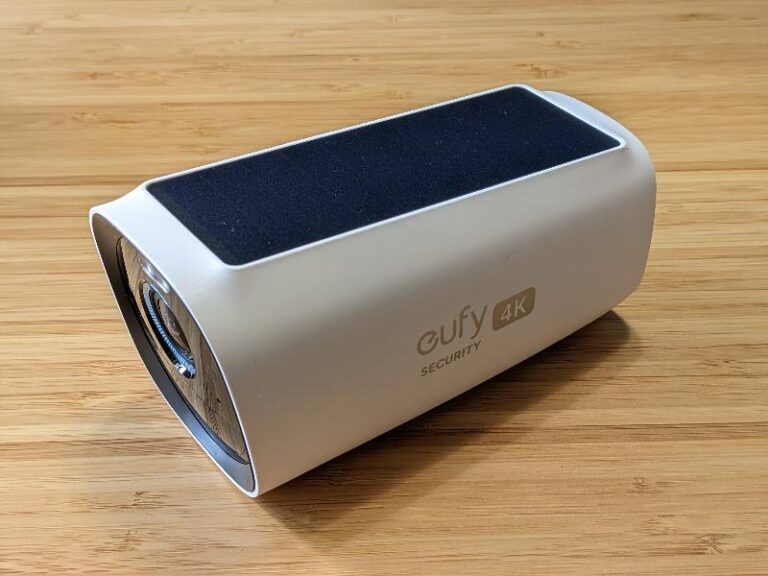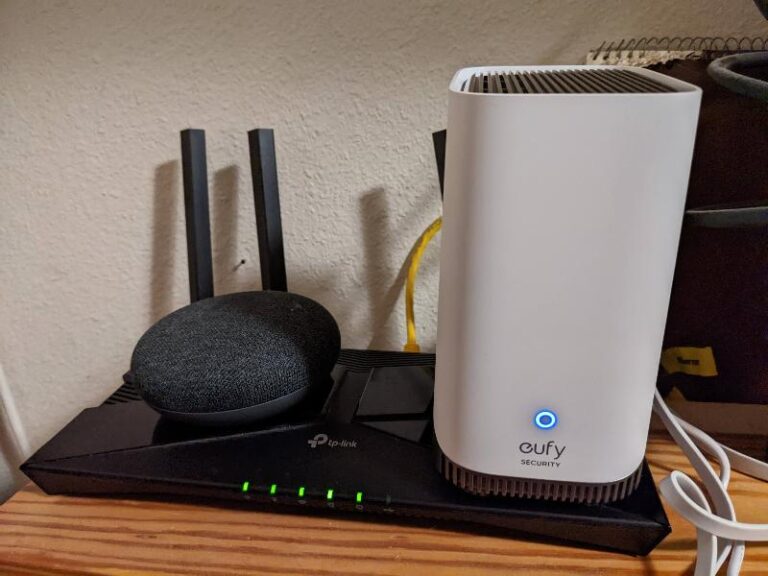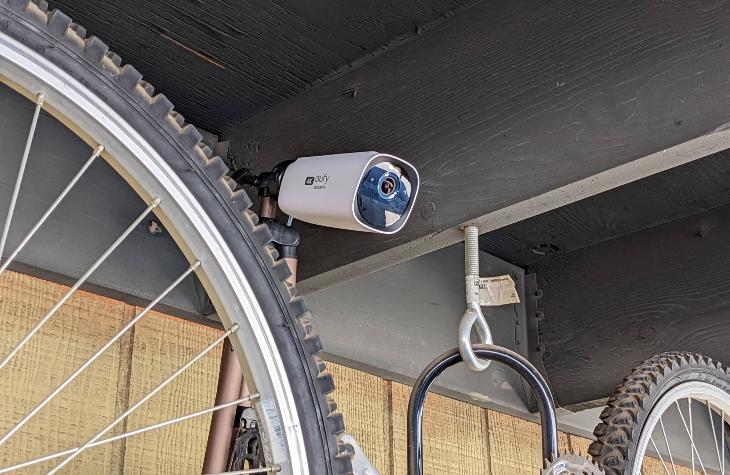EufyCam 3 is the brand's first 4K outdoor security camera, so we were eager to try it out. Wireless security cameras with 4K resolution are still a bit of a unicorn since the Arlo Ultra 2 is the only other model we know. (There are plenty of wired cameras with 4K, but they require an NVR.)
We've praised Eufy's video quality on its 2K models, and we're happy to report that excellence also carries over to 4K. Daytime video is clear and takes well to zooming in for a closer look at a visitor's face or a neighborhood cat—as long as they're not moving too much. Still, this is the best video quality we've ever seen from Eufy.
Nighttime video quality also looks great, especially when using infrared night vision. You can easily catch details and identify features up to 20 feet away from the camera on stationary subjects. We saw the best performance from the camera's infrared LEDs around 10 feet or less.
If monochrome videos aren't your thing, there's also a bright spotlight for color video at night, but its effective range is only a dozen feet or so. The 100-lumen spotlight works well enough but isn't very bright compared to the 3,000-lumen beast, the Eufy Floodlight Cam 2 Pro. Even though the spotlight isn't very bright, it washes out some details if someone comes within a few feet of the camera—the sweet spot for the light is between 5 and 15 feet.
The EufyCam 3's field of view is a bog-standard 135º like on the Nest Cam and Ring Stick Up Cam. This is the minimum view we recommend for an outdoor security camera because it captures plenty of action in your yard.
However, you'll need more cameras for full video coverage than you would with ultrawide fields of view—160º and over—as found on the Arlo Pro 4 and Arlo Ultra 2. Honestly, you don't need full video coverage as long as you aim the camera at entrances and vulnerable areas on your property—think storage sheds, side yards, and play areas.
The EufyCam 3 uses a framerate of just 15 frames per second (fps), which is the same speed you'll find on Ring security cameras. While this is great for optimizing storage space and streaming speeds, motion won't look as smooth as the higher framerates on Arlo and Nest. Still, it's good enough for everyday video surveillance in your yard.
Although we like how Eufy's video looks, there's some distortion and pixelation when watching a live view of the camera. Most of this is because we set the app to change streaming quality based on the network speed. Even with a speedy network connection, the outdoor camera wouldn't always stream in 4K. And manually saving a live video or image in the app always yielded a 1080p result.
Fortunately, the motion-triggered recordings look much better, though there's still a slight distortion when you zoom in on a moving object. We suspect this mostly comes down to heavy video compression to improve performance and reduce storage requirements.
Thankfully, Eufy resolved our biggest complaint with its small built-in storage by introducing a major improvement in the HomeBase 3: expandability. You can increase the storage capacity by adding either a hard disk drive (HDD) or solid-state drive (SSD) to your system—up to 16 TB—though 1 TB is more than enough for two cameras.
Eufy's cloud storage is optional and doesn't add much to your cameras since you don't need a subscription to unlock extra features like with Arlo, Google Nest, and Wyze. Still, it's a nice perk for backing up your video to the cloud in case your local storage fails.
There's one limit to Eufy's cloud storage that might not work for you: it won't save 4K videos, only 1080p. This is an understandable limit considering 4K video takes up four times as much space as 1080p.
Pricing for Eufy cloud storage is straightforward. You pay for either one camera on the Basic Plan or up to 10 cameras on the Plus Plan. At $3 a month, Eufy Basic costs as much as the base Ring Protect and Arlo Secure plans—it's pretty competitive. But paying $10 a month for Eufy Plus won't net the benefits of similar options from Nest, Ring, and Arlo, which all cover unlimited cameras instead of Eufy's 10.
It's totally fine to skip Eufy's cloud storage and invest that money in a hard drive.
